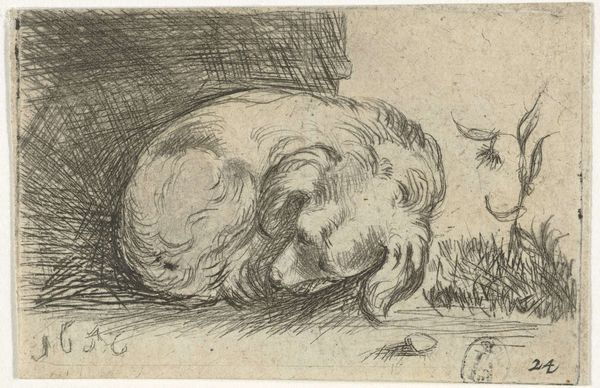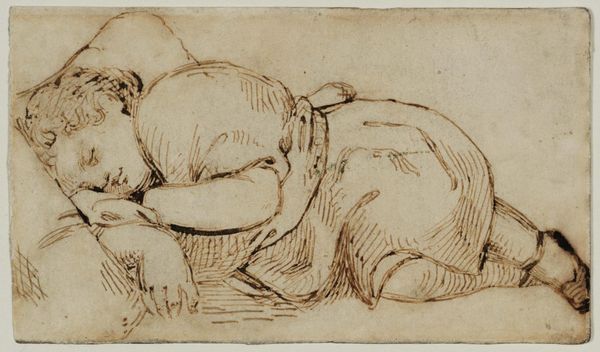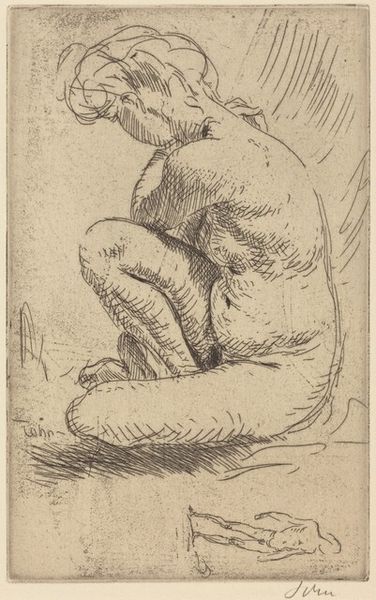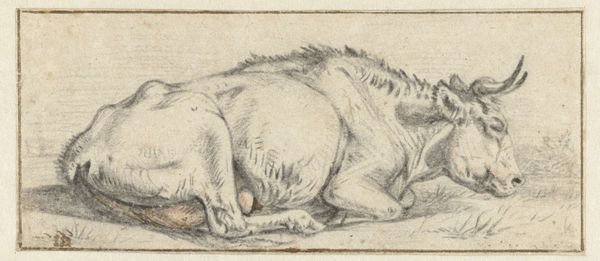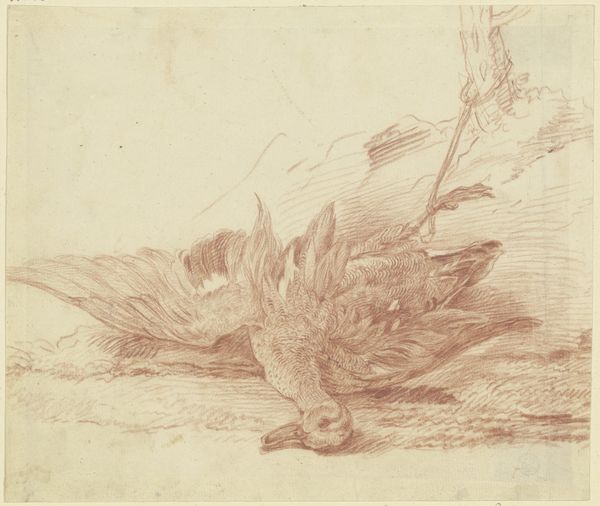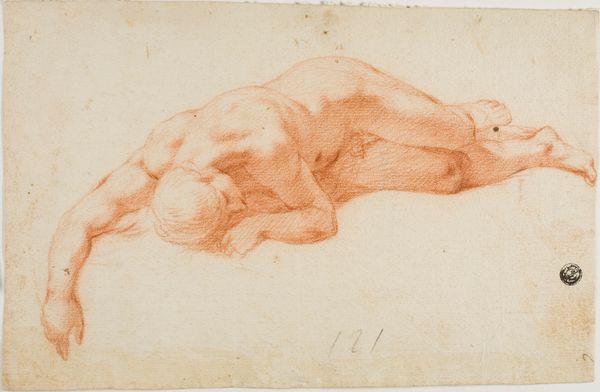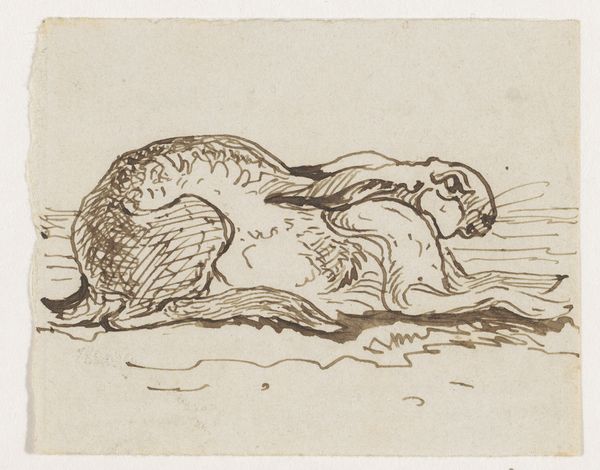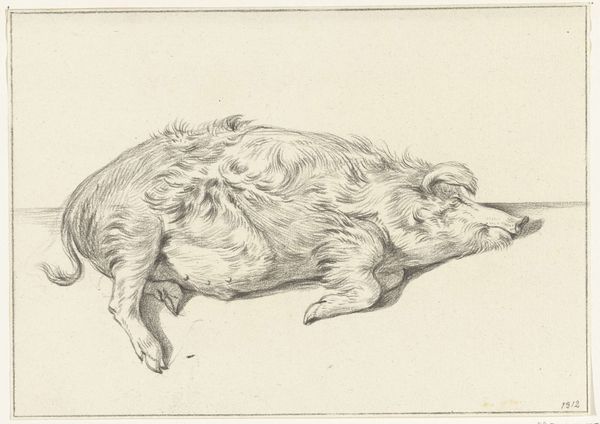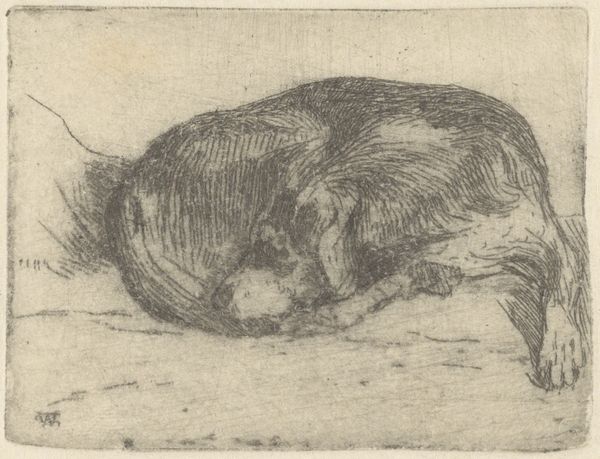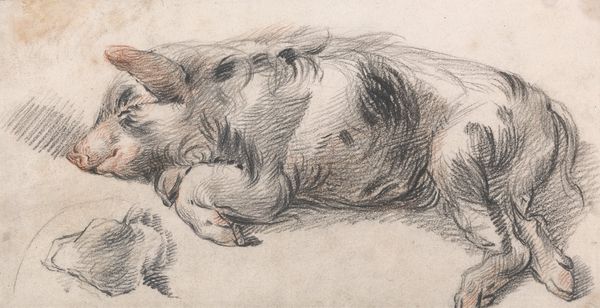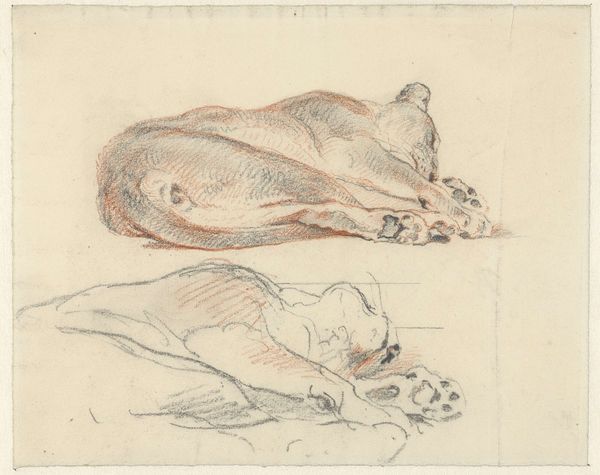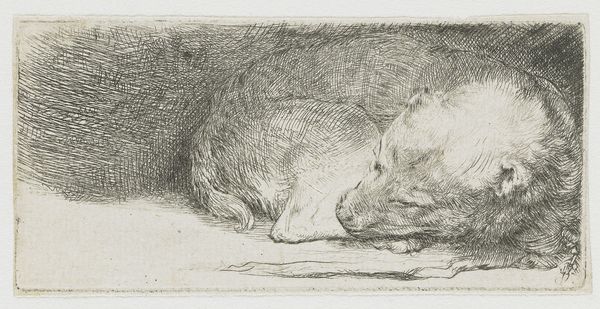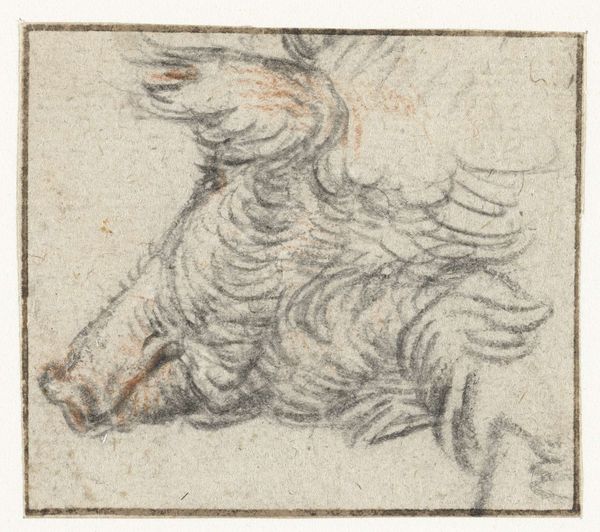
drawing, pencil
#
drawing
#
baroque
#
animal
#
pencil sketch
#
dog
#
pencil drawing
#
pencil
Dimensions: height 83 mm, width 123 mm
Copyright: Rijks Museum: Open Domain
Editor: So, this is "Liggende hond" – "Lying Dog" – by Pieter van Bloemen, dating from around 1667 to 1720. It’s a delicate pencil drawing. I’m struck by the simple, almost fetal, pose of the dog, radiating tranquility. What do you see in this piece, especially from a symbolic perspective? Curator: The coiled position immediately brings to mind ancient symbols of cyclical time and eternal return – the Ouroboros, for instance, or even the idea of hibernation and rebirth. In van Bloemen’s time, dogs often represented fidelity, but here, stripped of any active role, its loyalty seems turned inward, towards self-soothing. Does this introspection shift your perspective on the traditional symbolism? Editor: That's interesting. It does move away from the more active virtues often associated with dogs. Could this positioning suggest something about the dog’s, or even our own, psychological state? Curator: Absolutely. The curled form offers a sense of safety, of withdrawing from the world. The very act of observation asks the viewer to consider vulnerability and shelter. The loose lines of the drawing, too, almost seem to echo the softness of sleep. Is it possible this simply portrays comfort? What assumptions might viewers bring, informed by our complex relationships with domesticated animals? Editor: I hadn't thought about it that way. The comfort is really what sticks with me. It's something simple. Curator: Indeed. Art often uses the familiar to unlock deeper emotional understandings. What starts as an animal study transforms into an observation on vulnerability. Editor: It's amazing how much meaning can be found in a simple drawing. It’s like rediscovering an image through historical lenses. Curator: Precisely, and in this case, how historical meaning interacts with our own interpretations, generation after generation.
Comments
No comments
Be the first to comment and join the conversation on the ultimate creative platform.
